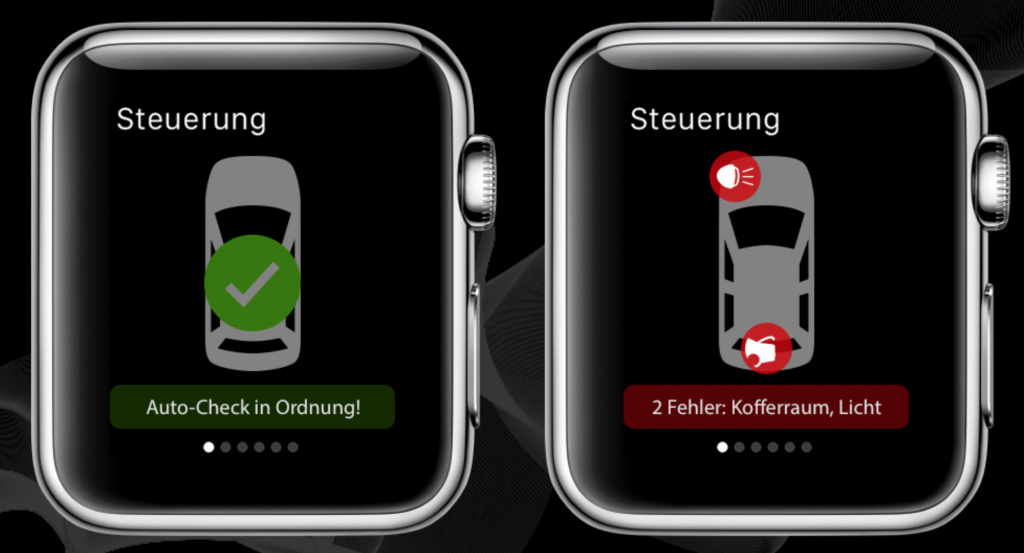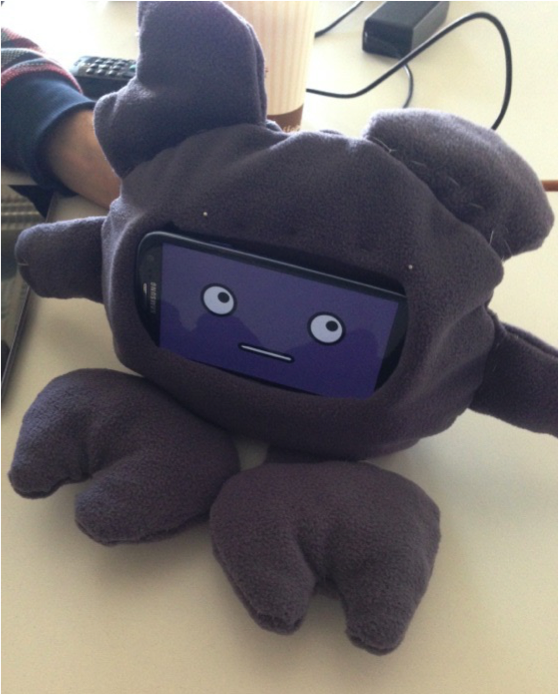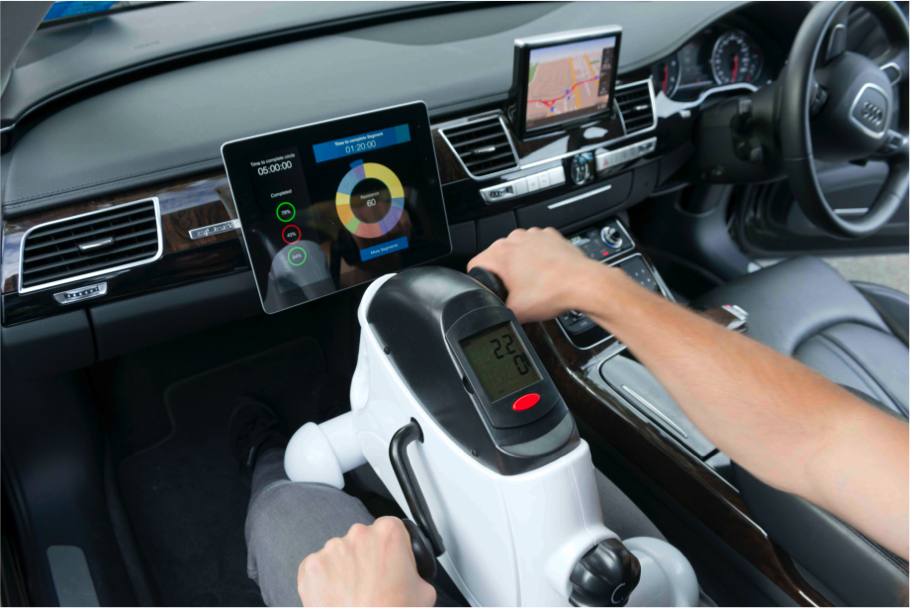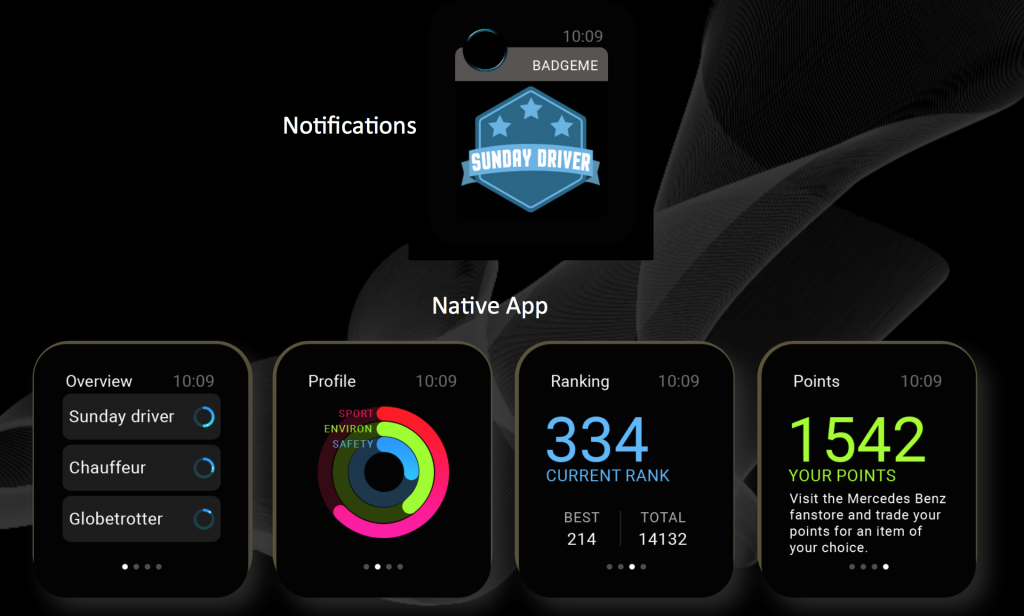The Apps to Automotive (A2A) conference takes place once a year in Esslingen, near Stuttgart. Since the beginning I am a member of the A2A program committee. This year (June, 11th 2015) I also took part as presenter and talked about two contemporary projects: Auto Play and the Telematics App-Challenge.
Auto Play
Together with Steffen P. Walz, Dominik Stampfl and Sven Krome (who unfortunately could not come himself) from the RMIT University’s GEELab, we presented: “Auto Play- Enhancing the enjoyability of the manual and autonomous vehicle experience”. In this presentation we introduced two doctoral research projects resulting from an ongoing collaboration between RMIT University’s Games and Experimental Entertainment Laboratory (the GEElab) and Stuttgart Media University, for GEElab’s project partner Audi Electronic Ventures. The goal of both projects is to assess challenges in automotive urban traffic, and to explore enjoyable, interactive solutions created from a game designer’s perspective. Both projects focus on an akin traffic situation – congestion with stop-and-go traffic – but are genuinely different regarding the research question and the design context; still, both use contextual information aiming to increase the vehicle experience’s enjoyability. Both approaches underline the potential of this design space, which is only in its infancy: whereas Dominik Stampfl’s research focuses on prototyping a contextually aware “virtual traffic companion” in order to increase the enjoyability of manual driving, Sven Krome’s research project explores how to engage the inactive drivers of fully autonomous vehicles in stop-and-go traffic, using contextual and onboard diagnostics data.
Here follows a brief overview of both projects:
Dominik Stampfl: Virtual Traffic Companion
This PhD project is part of a research on applying game design elements to different forms of urban mobility in order to address mobility challenges and increase the enjoyability of mobile experiences during such situations. Challenges in urban mobility can be manifold, for instance pollution, long travel times or, in this case, traffic congestion. This often leads to frustration, aggression and loneliness with respective impacts on what can broadly be called wellbeing.
The concept idea of a virtual traffic companion has been developed together with Peking University students in order to overcome a frequently frustrating automotive experience in
Peking due to congestion. The context is to perceive as design opportunities, what might be seen as design constraints on the first sight: Looking at the mobile city through a game lens allows us to understand challenges in urban mobility as game elements. Treating such unpleasant situations gamelike, we can transform for instance the “wasted” time in a traffic jam into something positive: a resource, a goal or an opponent.
Together with Stuttgart Media University we have developed a proofofconcept prototype application to demonstrate that it is possible to detect different traffic patterns by using only builtin sensors of a smartphone. This approach is similar to how for instance fitness apps utilize smartphone sensors to identify different forms of motion. Upon automated detection, our application offers communication and enjoyment for instance in form of mini games and (conceptually) social interaction features just like a good companion.
Sven Krome: Context-Aware Exertion In Autonomous Vehicles
Transferring the driving task to the vehicle will enable the inactive driver to perform a large variety of tasks impossible to perform while driving manually. In particular, routine drives such as daily commutes or undesired driving situation such as stopandgo traffic will benefit largely from autonomous technology and provide the opportunity to get things done, connect to friends or just get entertained by applications perfectly adapted to the design space of the car. In this doctoral research, we are interested how the autonomous driving experience can benefit from entertainment tailored for the context the car.
In a preliminary study of three Melbournebased commuters we identified the stopandgo traffic as one of the most annoying elements of the daily commute. It appears as if the car’s stopping triggers the commuter to perform a displacement activity to compensate for the hold of the car. Based on this observation we ideated on a range of interventions that makes the stop in stopandgo traffic more enjoyable.
One of the suggested solution consists of an exertion interface that connects its physical resistance with the car speed. The faster the car goes the bigger the resistance of the exertion interface; the slower the car, the lesser the resistance. If the vehicle has stopped, the resistance is zero. The user’s goal is to complete a selfdefined distance by turning a manually operated spinning wheel. In doing so the participant has to predict how long the car will stop or drive slow enough to complete the selected section. We assume that both, the physical experience of the car’s speed as well as the anticipation and prediction of the traffic situation will help to keep a relationship with car and context and hence provide the basis for a unique user experience of autonomous driving.
Telematics App-Challenge
Together with Ronald Henger (Daimler AG) and a team of my Master students, we presented the concept of Readi-Connect, a system that is able to provide “real-time” vehicle data to app developers including two of the prototype apps for the Apple Watch that were developed in my “Mobile Applications” course.

The first Apple Watch app concept called “Paddy (Park Buddy)” allows to get information on your car status wherever you are. You can see, for example, if the trunk is open or the lights are on. It allows to check your fuel level and navigates you to your car, when you forget where you have parked it. The intelligent park timer reminds you when you need to fill up the parking meter.




